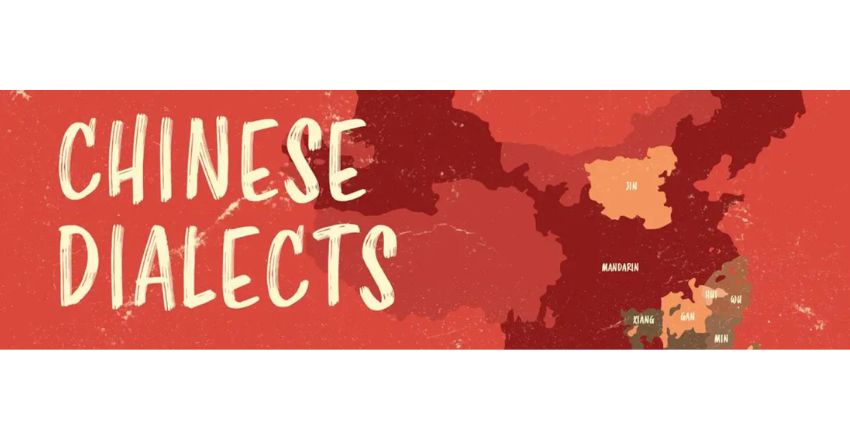Career
How To Choose The Right Chinese Dialect

It can be difficult to translate Chinese and to fully understand Chinese localization. Which dialect of Chinese to translate into for your intended audience can be confusing to those who don’t speak it. Let’s talk about the various dialects, their usage contexts, and how to select the most appropriate one for Chinese translation. In addition, we’ll offer some advice for anyone considering localization for the Chinese market.
The number of Chinese dialects
The primary Chinese dialect is Mandarin, which is sometimes known as simplified Chinese since it employs a streamlined version of classical Chinese characters. Mandarin is almost always utilized when you see written Chinese used outside of China, and the majority of individuals who don’t speak Chinese very well when they talk about the language do so in terms of Mandarin. On the other hand, Cantonese is a widely used dialect of spoken Chinese that is not written because of its traditional, more complex characters. Smaller regional dialects of Chinese are also spoken all across the country, including Wu (also known as Shanghaiese), Hakka, and Min in addition to these major dialects.
With over 1.3 billion native speakers, many of whom live outside of China, Chinese is undoubtedly one of the most widely spoken languages in the world. Although there are Chinese-speaking populations all over the world, Hong Kong, Macau, Taiwan, and Singapore are only a few of the Asian nations and territories where Chinese is an official language.
The right Chinese dialects that you should translate
Chinese written in its simplest form, which Mainland Chinese citizens can read and understand, is by far the most popular Chinese dialect picked for translation. When translating your website, legal translation contracts, product descriptions, marketing materials, and other assets, you should pick this language if your business is trying to enter the Chinese market. The same is true whether you are translating any personal documents for usage in Mainland China, such as identification for a visa, job postings for babysitters and cleaners, or even love letters (yes, we’ve translated these!).
But it’s best to use traditional Chinese dialect if you want to conduct business in Taiwan or Hong Kong. Because traditional and simplified Chinese users effectively speak two separate languages, it’s crucial to choose the appropriate dialect for your target market and audience. Rarely would a cantonese translation be necessary for a project like transcribing or if you were looking for a very informal, colloquial translation for an audience you were familiar with.
Bonus tips for Chinese localization
Start with tier 1 cities
A five-tiered city system based on variables like GDP and population divides the Chinese market into segments. To thrive in China, focus on tier 1 cities like Beijing, Guangzhou, Shanghai, and Shenzhen first, then new tier 1 cities like Chengdu and Hangzhou, and so on through tier 2 and beyond. Make delivery available to these major cities, create offices or physical storefronts in their commercial and shopping zones, or target them with your marketing campaigns.
Research the potential success of industry in China
Gaming, fashion, and e-commerce are some of the sectors with the most promise in China. According to Asialink Business, eCommerce sales in China really account for 3.2% of the nation’s GDP as opposed to just 2.7% in the US. This eCommerce boom’s 632 million internet users mean that your company can succeed in China even with a little physical presence. If your company operates in one of these sectors, research the local competitors and consider using localization to expand your clientele in China. If not, check to see if your sector has a chance to enter this competitive market before moving forward.
Utilize the right social media and localize SEO
How can you ensure that your brand and messaging are understood by your Chinese-speaking audience even if you have translated your advertisements, website, and product descriptions into the appropriate Chinese dialect? Your localization will be significantly easier if you’re aiming for Hong Kong or Taiwan because those regions can use websites and apps that are blocked in mainland China. However, you may disregard Facebook, Google, YouTube, and the majority of other websites popular in the West if you’re trying to reach Chinese consumers. To increase your SEO and rank on the Baidu SERPs, you’ll need to set up your Chinese ads on Baidu, which is the most widely used search engine in China. You’ll also need to conduct local keyword research.
Furthermore, it’s critical to modify your material to prevent utilizing “forbidden words” and triggering restrictions from the Chinese government.
In terms of social media, WeChat is where you should be if you want to build a following and draw clients in China. WeChat: What is it? Imagine a mix of gaming, Facebook, Instagram, PayPal, Whatsapp, and Whatsapp. You should have a presence in China since Chinese users can do anything on this platform. Similar to Twitter but without a character limit, Weibo is the second-largest social media network in the nation. Additionally, Tik Tok, also known as Douyin in China, is becoming very popular. For your Chinese audience, make sure to not only translate and localize all of your social media content, but also to place it where they can see it.
GTE Localize is the best Chinese translation services
Chinese dialect is a huge task, but if carried out properly, it might yield significant benefits. Native Chinese speakers from GTE Localize can assist you in translating and localizing every area of your company so that it will be appealing to consumers in China and other Chinese-speaking countries.
As one of the leading Chinese translation service providers, GTE Localize utilizes native Chinese speakers as translators, editors, writers, and proofreaders who are qualified to select the best translators for each project.
With a team of qualified translators, comprehensive client support, verified translations, and commitment to customer satisfaction, Abayam upholds high standards of quality. Online translators are usually a wonderful Chinese dialect option for a rapid translation or perhaps when attempting to understand only the idea of it, but for anything more.
-
Blog1 year ago
MyCSULB: Login to CSULB Student and Employee Portal – MyCSULB 2023
-
Android App3 years ago
Cqatest App What is It
-
Android1 year ago
What Is content://com.android.browser.home/ All About in 2023? Set Up content com android browser home
-
Software2 years ago
A Guide For Better Cybersecurity & Data Protection For Your Devices
-
Latest News2 years ago
Soap2day Similar Sites And Alternatives To Watch Free Movies
-
Android2 years ago
What is OMACP And How To Remove It? Easy Guide OMACP 2022
-
Android3 years ago
What is org.codeaurora.snapcam?
-
Business2 years ago
Know Your Business (KYB) Process – Critical Component For Partnerships





















